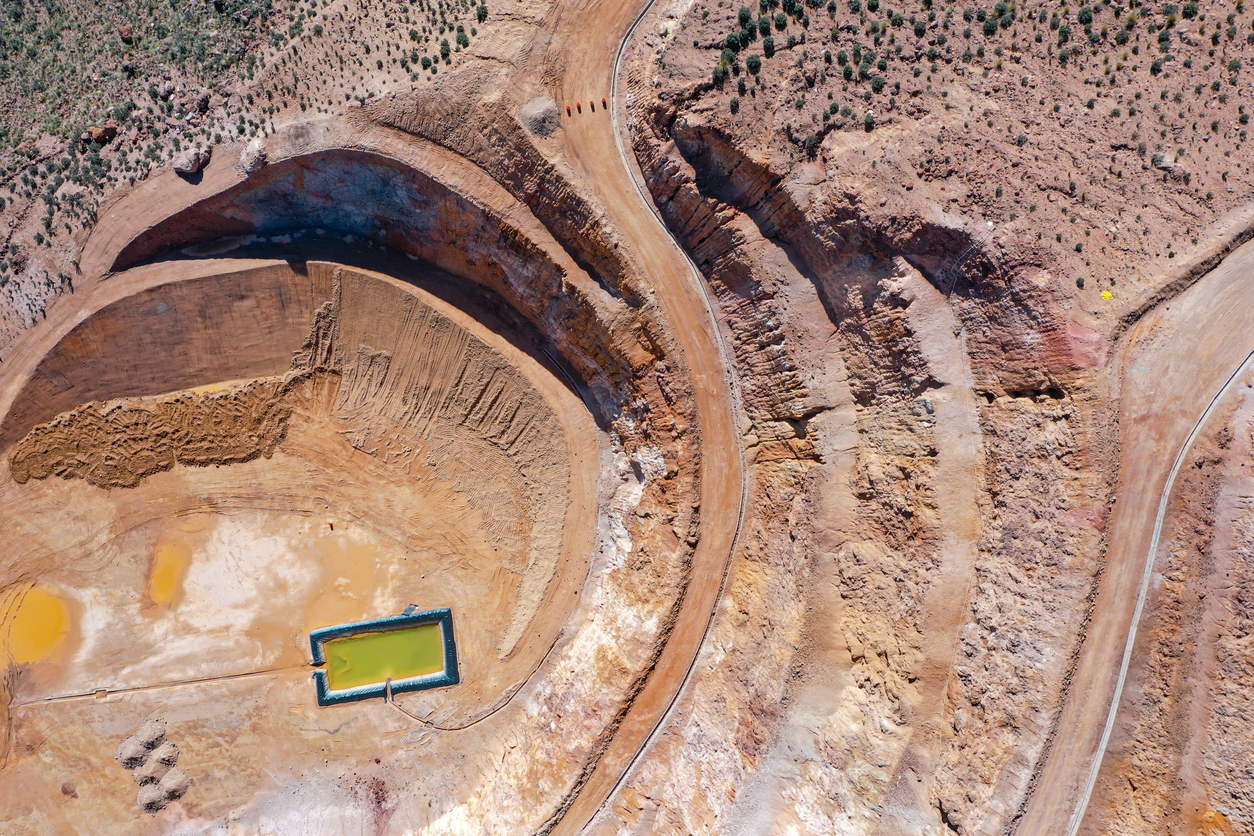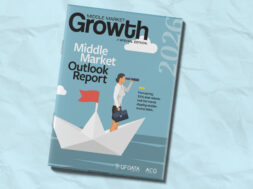Dealmaker Q&A: Kava Equity Partners on Acquiring Arrowhead Contracting
The recently launched PE fund, an entity of the Southern Ute Indian Tribe Growth Fund, plans to take a long view on investments that align with the Tribe’s values

Kava Equity Partners, a lower middle-market PE fund and a business entity of the Southern Ute Indian Tribe Growth Fund, announced its inaugural deal in October: the acquisition of Arrowhead Contracting, a construction company and provider of environmental remediation and contracting services.
James Dudley, Kava’s managing director, told Middle Market Growth that this deal was shaped by aligned values between Arrowhead and the Tribe, and that the fund plans to take a “deliberate” approach with this and future investments.
Middle Market Growth: When sourcing the deal, what were you looking for in an investment target and how did Arrowhead Contracting fill those requirements?
James Dudley: The Arrowhead acquisition fits squarely within the core of our strategy at Kava—control investments in lower middle-market businesses with $5 to 25 million of EBITDA, and a history of steady and profitable growth. We’re not looking for massive growth ramps.
Arrowhead brings a 33-year track record of high-quality performance as a federal government contractor. They’ve worked in both the environmental remediation and general contracting spaces and have gotten high marks throughout. While we’re industry-agnostic, we’re investing first and foremost for the financial return.
What’s also important to us is that any investment we make aligns with, or at least doesn’t contradict, tribal values of environmental stewardship, community development and economic empowerment. As an environmental remediation services provider with Native American employees and a history of respectful and collaborative work in Indian country, Arrowhead was a great fit.
MMG: What attracted the growth fund and Kava to the environmental remediation/contracting space initially, and how does this deal fit into your broader investment thesis?
JD: Our initial evaluation of an opportunity is typically focused on alignment, the financial profile and the quality of the team. We will sometimes start from an industry-specific thesis, but more often we’re looking at a broad range of opportunities.
We were introduced to Arrowhead by a Kansas City-based investment banker, CC Capital Advisors. They reached out after seeing our announcement of Kava’s launch last fall and we had a promising initial meeting with the Arrowhead founder Curt Koutelas. We dug into the environmental remediation space and really liked what we saw there. Aside from the obvious alignment with the values of environmental stewardship, the federal government contracting space generally is one in which tribal ownership can bring certain advantages, so that was generally on our radar even prior to meeting Arrowhead. It was a nice confluence of those factors.
In Curt we had a highly experienced person and in that initial meeting I really realized we could work well with him. We had a good alignment of values, and we had a good alignment of temperament.
MMG: What are some of the headwinds or challenges you’re seeing in the space, and how do you plan to drive growth despite those?
JD: The unfortunate truth is that our country has an enormous backlog of environmental cleanup that needs to be done. This is a legacy of industrial growth and resource extraction that were largely unregulated for much of our history. This backlog is only growing larger, as we better understand the effects of various industrial chemicals on humans and the environment and things like PFAS “forever chemicals.” That relatively recent development could totally upend the remediation market. They’re difficult to get out of the groundwater and they could be everywhere, not to sound alarmist. Arrowhead has a long track record in groundwater treatment, so that’s a challenge we’re looking very closely at, to position ourselves well once the determination is made on how the cleanup (of PFAS chemicals) happens.
Speaking of funding, because Arrowhead’s in the federal government contracting space, they’re subject to the dynamics of government spending and budgeting, but a lot of the work they do is in areas with well-defined, long-term funding that’s already been allocated, and they have a large portfolio of work with demonstrated expertise in a broad range of types of remediation work and general contracting. They protect themselves through diversification as well and we’re actively exploring additional strategic diversification into other areas that they haven’t had the capacity or expertise to work in the past. For example, they do a lot of work with the EPA and the Department of Defense, but they haven’t done much Department of Energy (DoE) work, but our new President Drew White comes from a company that did a lot of DoE work, and he brings that expertise and those connections. So, while there are absolutely areas where there will be hiccups for the market as a whole, overall we see long-term growth ahead of us and there are opportunities for us to expand even within the existing market.
MMG: How does working with a Tribe’s growth fund shape the private equity investment group’s decisions? Does the decision-making process differ significantly from the average PE fund’s because of that?
JD: Yes and no. So, being a part of the growth fund really does allow for us to take a unique approach. We’re able to cherry pick the best aspects of institutional private equity and combine them with the flexibility and patience that come with basically being a sovereign wealth fund. When we approach deals, every company is unique so, if we can be a little bit more flexible and creative in our structuring transactions in a way that reacts to the specific characteristics of that company and that seller and what they care about, rather than forcing every deal into some kind of predefined structure, many sellers recognize the value in that. But we also have a large organization behind us, with significant internal resources, capabilities and an operational track record of its own that we can bring to the company.
When we approach deals, every company is unique so, if we can be a little bit more flexible and creative in our structuring transactions in a way that reacts to the specific characteristics of that company and that seller and what they care about, rather than forcing every deal into some kind of predefined structure, many sellers recognize the value in that.
So, our decision-making structure has really resonated a lot of times with sellers, particularly those who value alignment and the legacy of their business. At the end of the day, it’s not really that different from any PE fund with an investment committee, but how we look at it sometimes can be a little bit different, a little bit more strategic, not purely financial from a “let’s see how quickly we can turn this and get our return.” The Tribe has a very long viewpoint and perspective in terms of investment, and there’s no quick flip mentality here. We’re not investing with the idea of reselling the company in five years. I do expect portfolio turnover, but likely on more of a 7-to-10-year timeframe. I think that allows for a little bit more sustainable growth of value in the company. We’re approaching things very deliberately.
MMG: The press release references the fact that this deal will fuel Arrowhead’s expansion. What kinds of expansion are you targeting?
JD: As I mentioned, we do have several strategic growth initiatives in the works. We made the investment with these ideas. Because we’re a patient investor, we don’t have a fund-mandated timeline. Arrowhead has a fantastic management team with decades of industry experience and we want to leverage their expertise to develop and inform that strategic growth plan so we don’t disrupt or damage, like I said earlier, what has made them a successful business in the past. And that plays into how we really value partnership with those we’re investing in rather than just coming in and telling them what to do—not implying anybody else does just that. Arrowhead has a national footprint, but they’re still a small business, so roll-up or bolt-on acquisitions are certainly on the table to strategically expand their capabilities or their capacity to be more competitive in the market.
One of the big advantages we have as an investor is we have additional growth capital, so we can focus on proactively building the team and infrastructure to pursue and take advantage of larger opportunities. Some people talk about the investment J curve there: Now that it’s no longer a single person making these strategic decisions and taking on that risk, it opens up some opportunities to be a bit more proactive about pursuing growth. There are also new opportunities that come with being a tribally owned business in federal government, and with contracting in particular. Arrowhead’s portfolio and work history have set them up really nicely to be particularly applicable to those opportunities.
This interview has been edited and condensed for clarity.
Hilary Collins is ACG’s Associate Editor.
Middle Market Growth is produced by the Association for Corporate Growth. To learn more about the organization and how to become a member, visit www.acg.org.


